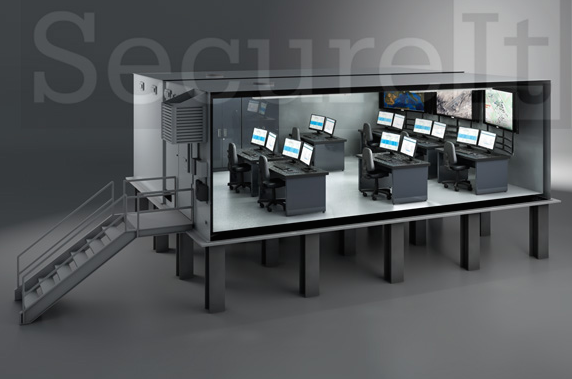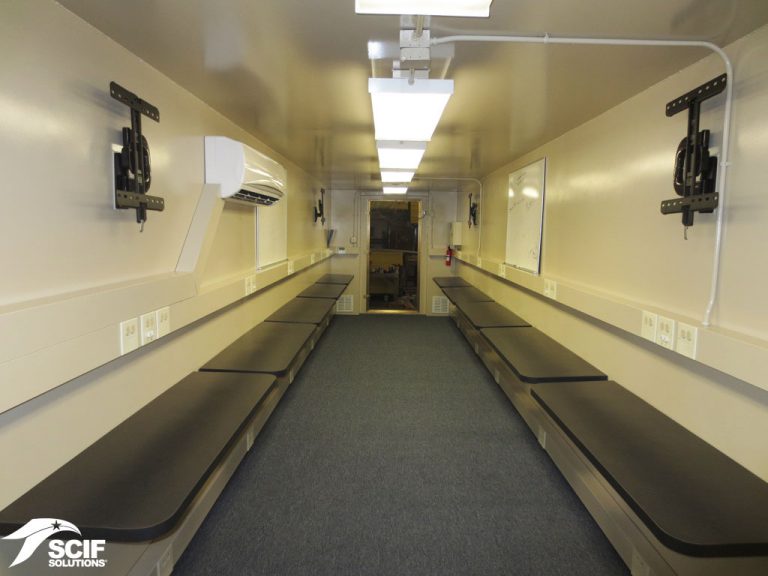In the world of national security, where secrets can mean the difference between safety and catastrophe, the concept of a Secure Compartmented Information Facility (SCIF) is paramount. These specialized rooms are designed to protect classified information from unauthorized access, eavesdropping, and potential leaks. But what exactly is a SCIF room, and why does it matter?
This article explores the definition, purpose, and importance of SCIFs in safeguarding sensitive government and military information. We’ll also examine how these facilities are constructed, their role in modern intelligence operations, and the challenges they face in an increasingly digital world.
What Is a SCIF Room?
A Secure Compartmented Information Facility (SCIF) is a highly secure room or space used by government officials, military personnel, and intelligence agencies to discuss, store, and process classified information. SCIFs are designed to prevent unauthorized access, electronic eavesdropping, and physical breaches. They are essential for protecting sensitive data that could harm national security if exposed.
SCIFs are not just any locked room; they are engineered with multiple layers of security, including reinforced walls, restricted access, and advanced shielding against electromagnetic signals. These facilities are often found in government buildings, military installations, embassies, and even private residences of high-ranking officials.
The Purpose of SCIFs

The primary goal of a SCIF is to ensure that classified information remains confidential. This includes everything from military strategies and intelligence reports to diplomatic communications and technological advancements. SCIFs serve several key purposes:
- Preventing Unauthorized Access: Only individuals with the appropriate security clearance and a “need to know” can enter a SCIF.
- Blocking Electronic Surveillance: SCIFs are shielded to prevent eavesdropping via radio frequencies or other electronic means.
- Protecting Sensitive Conversations: Acoustic shielding and soundproofing ensure that discussions within a SCIF remain private.
- Securing Physical Documents: Classified materials are stored in locked cabinets or safes, and strict protocols govern their handling and disposal.
How Are SCIFs Constructed?

SCIFs are built according to strict standards set by the U.S. government, particularly the Office of the Director of National Intelligence (ODNI). The construction process involves multiple layers of security to create a “fortress-like” environment. Here’s a breakdown of the key components:
1. Physical Security
- Reinforced Walls: SCIFs are built with thick, reinforced walls made of materials like gypsum board, plywood, and metal.
- Secure Doors: Doors are equipped with deadbolts, combination locks, and access control systems.
- Controlled Entry Points: Access is limited to authorized personnel only, often requiring both a badge and a personal identification number (PIN).
2. Radio Frequency (RF) Security
- Shielding: SCIFs are lined with materials that block external RF signals, preventing eavesdropping on electronic devices.
- Signal Jamming: Some SCIFs use signal jamming technology to prevent unauthorized transmissions.
3. Electronic Security
- TEMPEST Shielding: This refers to protection against compromising emanations—unintentional signals that could be intercepted and analyzed.
- EMI Protection: Electromagnetic interference (EMI) is minimized to prevent data leaks through electrical systems.
4. Access Control
- Biometric Authentication: Many SCIFs use fingerprint or facial recognition systems to verify identity.
- Log Monitoring: All entries and exits are recorded and monitored to ensure accountability.
5. Communication Security
- Encrypted Devices: All communication within a SCIF is encrypted to prevent interception.
- Restricted Equipment: Cellphones and other unsecured devices are prohibited inside SCIFs.
6. Acoustic Security
- Soundproofing: Walls, ceilings, and floors are treated with soundproofing materials to prevent conversations from being overheard.
- White Noise Generators: These systems create background noise to mask sensitive discussions.
Who Uses SCIFs?
SCIFs are primarily used by government officials, military personnel, and intelligence agencies. However, their use extends beyond the federal government:
- Presidents and Vice Presidents: High-ranking officials often have SCIFs in their homes or at official locations.
- Military Personnel: SCIFs are common in military bases and command centers.
- Diplomats: Embassies and consulates use SCIFs to protect sensitive diplomatic communications.
- Government Contractors: Private companies working on classified projects may also have SCIFs.
The Role of SCIFs in National Security
SCIFs play a critical role in maintaining national security. They are essential for:
- Protecting Military Strategies: SCIFs are used to plan and coordinate military operations.
- Safeguarding Intelligence: Intelligence agencies rely on SCIFs to analyze and share sensitive information.
- Securing Diplomatic Communications: Embassies use SCIFs to conduct private discussions with foreign governments.
- Handling Classified Documents: SCIFs provide a secure environment for reviewing and storing top-secret documents.
Despite their importance, SCIFs are not foolproof. In recent years, there have been several high-profile cases of classified information being mishandled or leaked, including:
- Donald Trump’s Case: Classified documents were found at his Mar-a-Lago estate.
- Jack Teixeira’s Leaks: A National Guard member leaked classified information via Discord.
- Mike Pence and Joe Biden: Unsecured classified documents were discovered at their residences.
These incidents highlight the need for stricter oversight and better training for those who handle sensitive information.
Challenges Facing SCIFs

While SCIFs are highly secure, they face several challenges in the modern era:
- Human Error: Even with strict protocols, mistakes can occur. For example, classified documents may be left in the wrong place or shared with the wrong person.
- Technological Advancements: As technology evolves, so do the methods used to breach security. SCIFs must constantly adapt to new threats.
- Overclassification: Some experts argue that too much information is classified, making it harder to manage and increasing the risk of leaks.
- Security Breaches: Despite best efforts, breaches can still occur, as seen in the case of Jack Teixeira.
The Future of SCIFs
As the threat landscape continues to evolve, SCIFs will need to adapt to new challenges. This includes:
- Enhanced Cybersecurity Measures: With more data being stored digitally, SCIFs must incorporate stronger cybersecurity protections.
- Improved Training: Personnel who work in SCIFs should receive regular training on security protocols and best practices.
- Better Oversight: Increased oversight and accountability can help prevent future breaches and ensure that SCIFs are used correctly.
Conclusion
SCIFs are a cornerstone of national security, providing a secure environment for handling classified information. From their construction to their use, every aspect of a SCIF is designed to protect sensitive data from unauthorized access and exposure. While no system is completely foolproof, SCIFs remain one of the most effective ways to safeguard the nation’s most important secrets.
As technology advances and new threats emerge, the importance of SCIFs will only grow. Ensuring that these facilities are properly maintained, securely managed, and regularly updated will be critical to protecting national security in the years to come.
Author: John Doe
Title/Role: National Security Analyst
Credentials: John Doe has over 15 years of experience in national security policy and has worked with various government agencies to evaluate and improve security protocols.
Profile Link: https://www.johndoe.com
Sources:
– Office of the Director of National Intelligence (ODNI)
– U.S. Department of Defense
– Intelligence Community Directive 705 (ICD 705)
Internal Links:
– Understanding National Security Protocols
– The Role of Intelligence Agencies
– Cybersecurity in Government Operations
Call to Action: Stay updated with the latest news on national security and classified information by following our blog and subscribing to our newsletter.












More Stories
What Is Yodo Para Tiroides and How Does It Affect Thyroid Health?
How to Claim Your Joy in League of Legends: A Step-by-Step Guide
What is WSET? A Comprehensive Guide to Wine Education